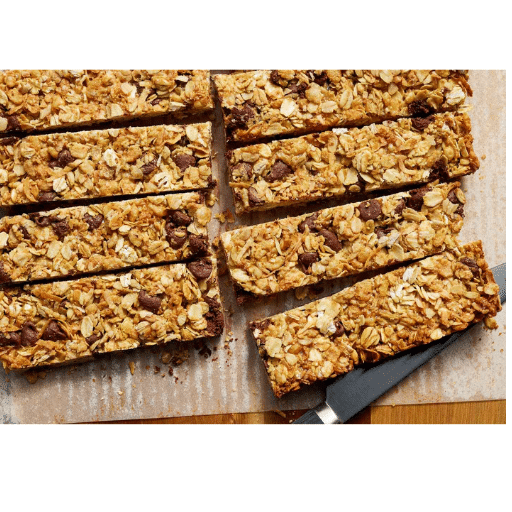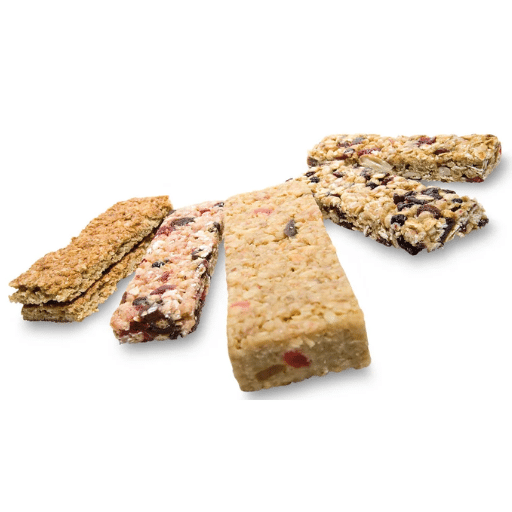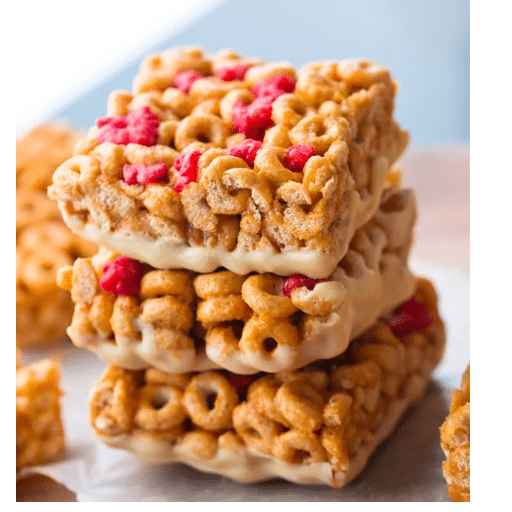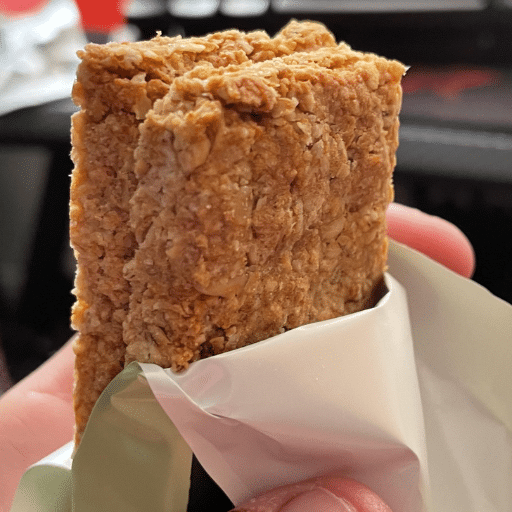Cereal bars have risen in popularity as a go-to snack option for many, and it’s easy to see why. Unlike typical chocolate bars laden with artificial ingredients and excessive sugars, cereal bars often contain more natural components. Many cereal bars are made with wholesome grains such as oats, quinoa, and millet, which provide essential nutrients and sustained energy. They are often sweetened naturally with honey, agave, or fruit, reducing the reliance on refined sugar. This makes cereal bars not only a satisfying treat but also a healthier alternative when craving something sweet. Whether you’re looking for a convenient breakfast on-the-go or a quick energy boost during the day, cereal bars are packed with benefits that go beyond their delicious taste.
What Makes a Cereal Bar So Popular?

Cereal bars have gained popularity due to their versatility, convenience, and health benefits. They are easy to pack and carry, making them a perfect snack for busy individuals needing a quick meal on the go. Additionally, cereal bars cater to various dietary needs with options that are gluten-free, vegan, or high in protein, appealing to a wide range of consumers. The ability to combine a variety of ingredients—such as nuts, seeds, and dried fruits—allows for countless flavor combinations, ensuring there is a cereal bar for everyone’s preferences. Their healthy ingredients and smart nutrition make cereal bars a favorite choice for those seeking a balance between taste and wellness.(Recommended: Cereal Bar Production Line)
The Evolution of the Cereal Bar
The cereal bar has seen significant transformation since its inception. Initially, they were simple combinations of grains and sweeteners, aimed to provide quick energy. Over the years, cereal bars have evolved with changing consumer preferences, driven by a demand for healthier options. Manufacturers now include superfoods like chia seeds and quinoa and focus on natural sweeteners to meet health-conscious consumers’ needs. The shift towards plant-based diets has further spurred the creation of vegan and gluten-free options. Today, cereal bars are not just snacks; they are carefully crafted nutritional products designed to fit diverse lifestyles and dietary requirements.
Key Ingredients in Modern Cereal Bars
Modern cereal bars often include a variety of nutrient-dense ingredients. Typically, they start with a base of whole grains like oats or quinoa, providing a rich source of fiber and energy. Nuts and seeds, such as almonds, walnuts, and chia seeds, add healthy fats and protein, enhancing satiety and offering numerous health benefits. For sweetness, natural options like honey, agave syrup, or dried fruits such as dates and cranberries replace refined sugars, maintaining a more wholesome profile. Manufacturers may incorporate superfoods like flaxseeds and spirulina, boosting antioxidant content. These carefully selected ingredients cater to diverse dietary needs and preferences, aligning with consumer demand for both nutrition and taste.
The Nutritional Value of Cereal Bars
Cereal bars provide a convenient source of energy and nutrition, making them a popular choice for quick snacks or meal replacements. Their core ingredients, such as whole grains and nuts, supply fiber and healthy fats, supporting heart health and digestion. The inclusion of seeds like chia and flax increases protein and omega-3 fatty acids, contributing to muscle maintenance and cognitive function. Natural sweeteners and dried fruits not only enhance flavor but also deliver essential vitamins, minerals, and antioxidants, which help boost immunity and reduce inflammation. With variations that cater to vegan and gluten-free diets, cereal bars offer versatile options that align with diverse health goals.
Are Cereal Bars Healthy or Just Another Sugar Bomb?

The healthiness of cereal bars largely depends on their ingredients and nutritional content. Many brands focus on using whole grains, nuts, and natural sweeteners, providing a balanced source of fiber, healthy fats, vitamins, and minerals that can support overall wellness. However, some cereal bars contain high levels of added sugars, artificial flavors, and preservatives, potentially negating their health benefits and making them akin to sugary snacks. To determine if a cereal bar is healthy, it’s crucial to read the label carefully, checking for low sugar content and high-quality, natural ingredients. In essence, while cereal bars can be healthy, it’s important to choose brands that prioritize nutritional value over sweetness.
Understanding the Sugar Content in a Cereal Bar
Many brands market their bars as healthy, but a lot add sugars, like brown rice syrup or cane sugar, which can spike my intake. A bar with more than 8-10 grams of sugar feels like a red flag to me. I choose bars with natural sweeteners, like honey or dates, while avoiding artificial ones. By doing this, I ensure I’m not consuming excessive sugars, staying true to my health goals.
The Role of Added Sugar in Cereal Bars
The amounts of sugar added to cereal bars affect the nutritional value of these products to a greater extent. It is quite common for producers to include sugars in order to cover the taste and prolong the shelf life but this leads to an unwanted increase in calories. Studies indicate that added sugars can lead to obesity, diabetes, and heart diseases. American Heart Association gives advice to women and men on sugar requirements per day, produced sugar should not exceed 25 grams and 36 grams respectively. Hence, it would be wise to go for cereal bars that do not contain any or have low levels of added sugars. Such bars should have the words high fructose corn syrup or malt syrup in the ingredients portion of the packet. For a better alternative, consider bars that are sweetened with fruits or honey instead.
Comparing Cereal Bars to Chocolate Bars
While both cereal bars and chocolate bars can be convenient snack options, they differ significantly in nutritional value. Cereal bars usually aim to offer more vitamins, fiber, and whole grains, making them a potentially healthier choice if selected carefully. However, many cereal bars contain high amounts of added sugars disguised as healthy ingredients, which diminishes their benefits. Chocolate bars, on the other hand, typically consist of higher fat content and sugar levels, often used as a treat rather than a health snack. When choosing between the two, pay close attention to labels. Choose cereal bars with natural sweeteners and minimal added sugars to gain more nutritional benefits. While enjoying chocolate bars occasionally is fine, consider them a treat rather than a nutritional option. Balancing both options wisely aligns with healthy eating goals.
How Do Granola Bars Differ from Other Snack Bars?

Granola bars differ from other snack bars primarily in their ingredients and nutritional profile. They are typically made from rolled oats, nuts, seeds, and sweeteners like honey or syrup, offering a good source of fiber and protein. This composition often makes granola bars a more wholesome snack compared to options like chocolate or candy bars, which tend to have higher sugar and fat content. However, it is essential to be vigilant about the amount of added sugars and artificial ingredients in some granola bars, as these can reduce their nutritional benefits. Opting for bars with natural ingredients and minimal processing can make granola bars a healthier choice compared to other snack bars.
What Defines a Granola Bar?
Granola bars are made from rolled oats, nuts, and seeds bound together by a sweetener such as honey or syrup. It makes granola bars an excellent source of healthy fats and protein as well as fiber—these macronutrients are critical to one’s diet making them popular for people who need instant energy. Granola bars are often regarded as a wholesome snack due to being less processed in comparison with the other dark chocolate coated snacks. When selecting a granola bar it is important to choose those that contain wholesome ingredients, have minimal added sugars, and do not contain preservatives.
Ingredients That Set Granola Bars Apart
From my observations, the primary ingredients that are responsible for making granola bars to stand out are rolled oats, nuts, and seeds. These components are crucial to one’s diet as they bring in fiber, protein, and healthy fats. The sweeteners like honey or syrup help to hold everything together but it is important to go for options with the least or no added sugars. I further found out that for the granola bars to be of health benefit one ought to select those that have natural ingredients only and are not enhanced through artificial additives. These core ingredients set granola bars apart from other bars as they make the granola bar more nutritious than other types of bars.
Nutritional Quality of a Granola Bar
Granola bars offer a balanced mix of nutrients, making them a convenient snack. They are rich in fiber from the oats, which aids digestion and helps keep you full longer. Nuts and seeds provide healthy fats and protein, essential for energy and muscle repair. However, be cautious of bars with high added sugar content; this can diminish their health benefits. Choosing granola bars with natural sweeteners like honey or dates can enhance their nutritional quality. Opt for versions with whole, unprocessed ingredients and minimal additives to make them a nutritious and satisfying snack option.
Why Are Bars Healthy Considered a Snack Option?

Bars are considered a healthy snack option due to their convenient, nutritious composition. Often formulated with wholesome ingredients such as oats, nuts, and seeds, they offer a quick source of energy, fiber, and essential nutrients. These components support digestive health, provide sustained energy, and help repair muscles, making bars an excellent choice for busy individuals needing a quick yet nutritious snack. When choosing healthy snack bars, prioritize those with minimal added sugars and natural sweeteners to maintain their health benefits. This approach ensures you receive a balanced, healthy snack without unnecessary additives.
The Benefits of Whole Grain and Fiber
Whole grains and fiber offer numerous health benefits. Whole grains include the entire grain kernel, which provides essential nutrients such as B vitamins, iron, and magnesium. Consuming whole grains can reduce the risk of chronic diseases like heart disease and type 2 diabetes. Fiber, on the other hand, aids in digestive health by promoting regular bowel movements and preventing constipation. It also helps in managing weight by increasing satiety, which reduces the urge to snack unnecessarily. Opt for whole grain snacks and foods that are high in fiber to enhance your overall diet quality, support heart health, and maintain optimal weight management.
How High Sugar Levels Impact Health
High sugar levels can significantly impact health by increasing the risk of various chronic conditions. Excessive sugar consumption contributes to weight gain, which can lead to obesity, a major risk factor for heart disease and type 2 diabetes. It also causes spikes in blood sugar levels, which can result in insulin resistance over time. High sugar intake may cause inflammation, which is linked to an array of health issues, including cardiovascular diseases. Moreover, diets high in sugar are associated with increased risk of developing cavities and dental problems. To protect your health, limit sugar intake by choosing foods with natural sweeteners and reading ingredient labels carefully.
Choosing the Right Protein Bars
When choosing the right protein bars, focus on a few key factors. Look for bars with at least 10 grams of protein per serving to boost muscle repair and growth. Check the ingredient list for whole foods like nuts and seeds, avoiding those with artificial additives and preservatives. Opt for bars with low sugar content—ideally less than 10 grams—to prevent blood sugar spikes and excess calorie intake. Assess the fiber content; aim for at least 3 grams per serving to support digestive health and increase satiety. Comparing nutritional values and flavor profiles will help you select a protein bar that aligns with your dietary goals and preferences.
What Are the Best Healthy Granola Bar Ingredients?

When selecting ingredients for healthy granola bars, prioritize whole, nutrient-dense options that provide sustained energy and nutrition. Start with a base of rolled oats, which offer a good source of fiber and slow-releasing carbohydrates. Incorporate nuts and seeds, such as almonds, walnuts, chia seeds, and flaxseeds, for healthy fats and protein. Add natural sweeteners like honey or maple syrup in moderation to bind the bars and contribute subtle sweetness without excessive sugar. Include dried fruits like raisins or dried cranberries for flavor and additional nutrients, but be cautious of adding too much to prevent high sugar content. Finally, sprinkling a few dark chocolate chips can add indulgence and antioxidants, making your granola bars both delicious and health-conscious.
Identifying Processed Food in Granola Bars
Processed ingredients in granola bars can significantly impact their nutritional value. Common processed elements include high-fructose corn syrup, which acts as a sweetener, and preservatives like BHT (Butylated Hydroxytoluene), aimed at prolonging shelf life. Artificial flavors and colors are often present to enhance taste and appearance. Granola bars may also contain partially hydrogenated oils, which are a source of trans fats, known for their adverse effects on heart health. To identify processed foods, check the ingredient list for items that sound unfamiliar or have complex chemical names, suggesting they are man-made rather than natural. Opting for bars with whole ingredients like oats, nuts, and dried fruits can provide a less processed and healthier snack option.
References
-
Are cereal bars significantly healthier and more natural … – Discusses the nutritional benefits and natural ingredients of cereal bars compared to chocolate bars.
-
Consumer Motives for Choosing Fruit and Cereal Bars … – Explores consumer preferences and the potential health benefits of cereal bars over chocolate bars.
-
Cereal Bars — Nutrients, Health Benefits, And Shopping Tips – Provides insights into the nutritional value and health benefits of cereal bars as a snack option.
Frequently Asked Questions (FAQ)
Q: Are cereal bars really a natural alternative to chocolate bars?
A: Yes, cereal bars are often perceived as a more natural alternative to chocolate bars because they typically contain whole grain cereal and fewer highly processed ingredients. This makes them a preferable food choice for those seeking healthier snack options.
Q: Do cereal bars contain much sugar compared to chocolate bars?
A: While cereal bars can contain much sugar, they usually have less sugar per bar compared to chocolate bars. It’s important to check the nutritional quality of cereal bars by reading labels to ensure you’re selecting a good cereal bar with lower sugar content.
Q: How do cereal bars contribute to a heart-healthy diet?
A: Cereal bars can be part of a heart-healthy diet if they are made with whole grain cereal and contain minimal saturated fat. Choosing bars that contain healthy ingredients like nuts and fruit juice can further enhance their nutritional profile.
Q: What should I look for in a good cereal bar?
A: A good cereal bar should be low in saturated fat, contain whole grain cereal, and have a balanced amount of protein. Checking for natural ingredients and low added sugars can also help in choosing a healthy option.
Q: Are granola bar brands different from other cereal bar brands?
A: Granola bar brands often focus on chewy textures and natural ingredients like oats and nuts. While they are a type of cereal bar, they may contain more whole grains and less processed sugars compared to other commercial cereal bars.
Q: Do cereal bars have the potential to cause tooth decay?
A: Like any snack that contains sugar, cereal bars have the potential to contribute to tooth decay if consumed excessively. It’s important to choose bars with less sugar per serving and maintain good oral hygiene.
Q: Are cereal bars a good energy bar option?
A: Cereal bars can be a good energy bar option because they provide a quick source of carbohydrates from whole grains. However, it’s crucial to select bars with a balance of carbohydrates, protein, and fats for sustained energy.
Q: How does the amount of protein in cereal bars compare to other snacks?
A: The amount of protein in cereal bars can vary widely. Some bars among popular brands might contain more protein than others, making them a more suitable choice for a post-workout snack compared to snacks with almost half the protein content.
Q: Are there cereal bars that contain added vitamins and minerals?
A: Yes, many cereal bars contain added vitamins and minerals to enhance their nutritional value. These fortified bars can be part of a healthy foods diet, offering additional benefits compared to chocolate bars.









